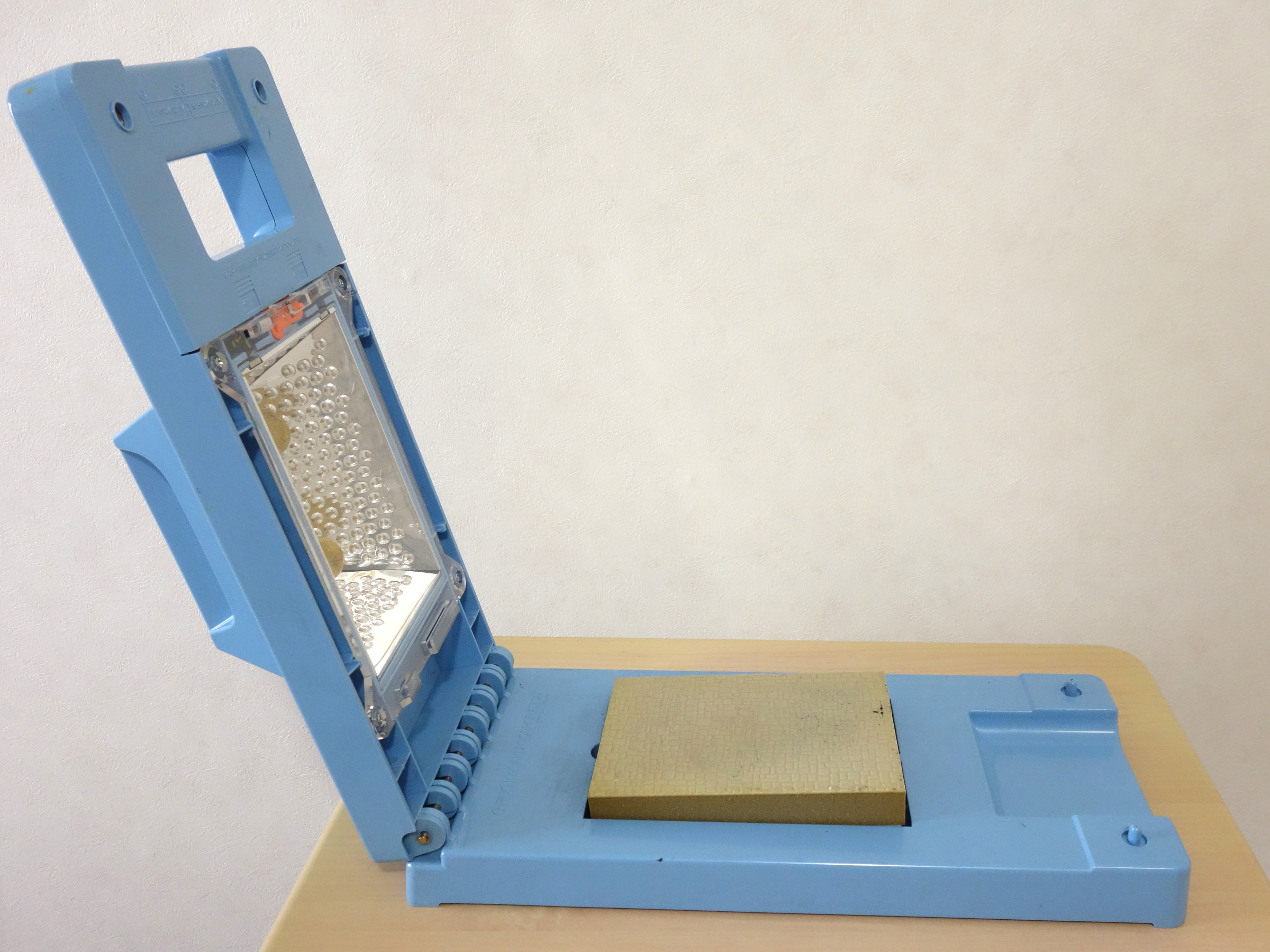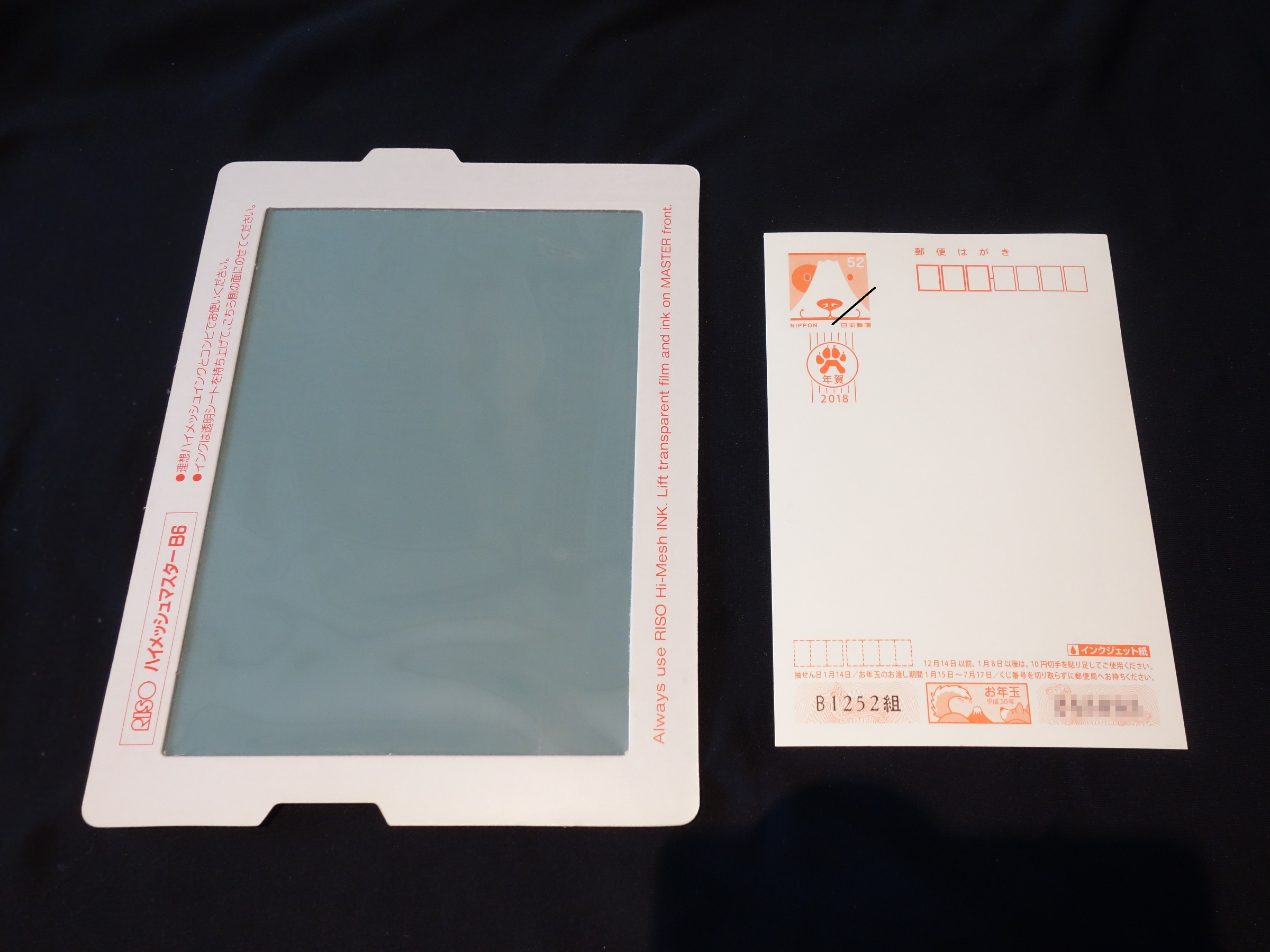Gocco on:
[Wikipedia]
[Google]
[Amazon]
is a self-contained compact color printing system invented in 1977, by Noboru Hayama. Gocco became immensely popular in Japan and it is estimated that one-third of Japanese households own a Print Gocco system. The printing mechanism is that of screen printing. The Gocco sets included the materials and tools to both make the screens, and to use these screens for printing. As the Gocco screens are quite small, they were most widely used for printing



Original Gocco Patent
* {{Cite web , title=Gocco photopool , url=https://www.flickr.com/groups/gocco/?tab=s , publisher=
Riso Gocco Screen Printing Demo
Screen printing Printmaking Products introduced in 1977 Japanese inventions
greeting card
A greeting card is a piece of card stock, usually with an illustration or photo, made of high quality paper featuring an expression of friendship or other sentiment. Although greeting cards are usually given on special occasions such as birthday ...
s, a popular need within Japanese culture. Gocco could also print to fabrics, although only across a small area. The Gocco printing screens provided accurate registration
Register or registration may refer to:
Arts entertainment, and media Music
* Register (music), the relative "height" or range of a note, melody, part, instrument, etc.
* ''Register'', a 2017 album by Travis Miller
* Registration (organ), th ...
, so printing in two or more colours was practical and popular.
The name "print gocco" is derived from the Japanese
Japanese may refer to:
* Something from or related to Japan, an island country in East Asia
* Japanese language, spoken mainly in Japan
* Japanese people, the ethnic group that identifies with Japan through ancestry or culture
** Japanese diaspor ...
word , loosely translated as make-believe play. Riso Kagaku president Noboru Hayama explained, "We s kids
S, or s, is the nineteenth Letter (alphabet), letter in the Latin alphabet, used in the English alphabet, modern English alphabet, the alphabets of other western European languages and others worldwide. Its name in English is English alphab ...
learned rules and knowledge through make-believe play. The spirit of play is an important cultural asset. I thought that I wanted to leave "play" in the product's name."
Printing method
The Gocco process was a variant of screen printing; the stencils were made through aphotocopying
A photocopier (also called copier or copy machine, and formerly Xerox machine, the generic trademark) is a machine that makes copies of documents and other visual images onto paper or plastic film quickly and cheaply. Most modern photocopiers u ...
process, similar to Thermofax
Thermo-Fax (very often Thermo fax) is 3M's trademarked name for a photocopying technology which was introduced in 1950. It was a form of thermographic printing and an example of a dry silver process. It was a significant advance as no chemicals ...
.
The body of the printer was a hinged plastic frame, used both as a press in the printing process, and as a holder for the artwork, screen and the lightbox in the stencil preparation.
The materials included proprietary blank screens, consisting of thin layer of thermoplastic bonded to a mesh, held in a cardboard frame and covered with transparent film. 


Screen making
Artwork was prepared as a simple black and white illustration on paper. This could be done by hand, with ink, paint or pencil, by computer printing (although the original Gocco pre-dated home computer printing), or by arranging pre-printed clip-arts. Solid black (the manufacturer suggested carbon based pigment or soft pencil) illustration gave better results and sharper prints. It was also possible to makephotogram
A photogram is a photographic image made without a camera by placing objects directly onto the surface of a light-sensitive material such as photographic paper and then exposing it to light.
The usual result is a negative shadow image th ...
s, using a natural material such as a leaf
A leaf ( : leaves) is any of the principal appendages of a vascular plant stem, usually borne laterally aboveground and specialized for photosynthesis. Leaves are collectively called foliage, as in "autumn foliage", while the leaves, ste ...
as an artwork of found-materials.
The blank screen was then sandwiched on top of the artwork and the Gocco's simple battery-powered lightbox was used to expose the screen. This used flash bulbs similar to those found in old cameras. The dark areas of the artwork would absorb more of the flash energy, the resulting heat would melt away the thermoplastic from the screen mesh. The stencil was immediately ready for use.
Printing
The paint was applied to the stencil and covered with foil. The stencil and blank paper were placed in the Gocco, pressing down on the printer handle would apply the pressure evenly to the stencil, squeezing the paint through the exposed areas. The required pressure limited the process to fairly small, postcard-sized prints. Unlike the typical screen printing which uses a squeegee, there was no large movement of paint, and so it was possible to use multiple paint colours at the same time. Foam separators could be used to further limit the colour mixing.Decline
In December 2005, Gocco’s parent company,Riso Kagaku Corporation
is a Japanese corporation which is the inventor, manufacturer, and distributor of the RISO Printer-Duplicator, a.k.a. Risograph. This device automatically creates a stencil-type master (from a paper original or digital file), thereby enabling ...
, announced it would end production of the Gocco system due to low sales in Japan. An Internet campaign was started to find a new home for the product.
As of June 2007, Riso Kagaku Corporation had resumed production of several lines of Print Gocco units and they were available in Japan and through limited import retail stores in the United States.
On May 30, 2008, the Riso Kagaku Corporation
is a Japanese corporation which is the inventor, manufacturer, and distributor of the RISO Printer-Duplicator, a.k.a. Risograph. This device automatically creates a stencil-type master (from a paper original or digital file), thereby enabling ...
announced that it would stop shipping Gocco printers in June 2008. It blamed the sharp decline in demand for its printers on the increase in use of home computers and printers. It was to continue producing supplies for the printers.
See also
* Screen printing *Mimeograph machine
A mimeograph machine (often abbreviated to mimeo, sometimes called a stencil duplicator) is a low-cost duplicating machine that works by forcing ink through a stencil onto paper. The process is called mimeography, and a copy made by the proce ...
References
External links
Original Gocco Patent
* {{Cite web , title=Gocco photopool , url=https://www.flickr.com/groups/gocco/?tab=s , publisher=
Flickr
Flickr ( ; ) is an American image hosting and video hosting service, as well as an online community, founded in Canada and headquartered in the United States. It was created by Ludicorp in 2004 and was a popular way for amateur and professional ...
Riso Gocco Screen Printing Demo
Screen printing Printmaking Products introduced in 1977 Japanese inventions